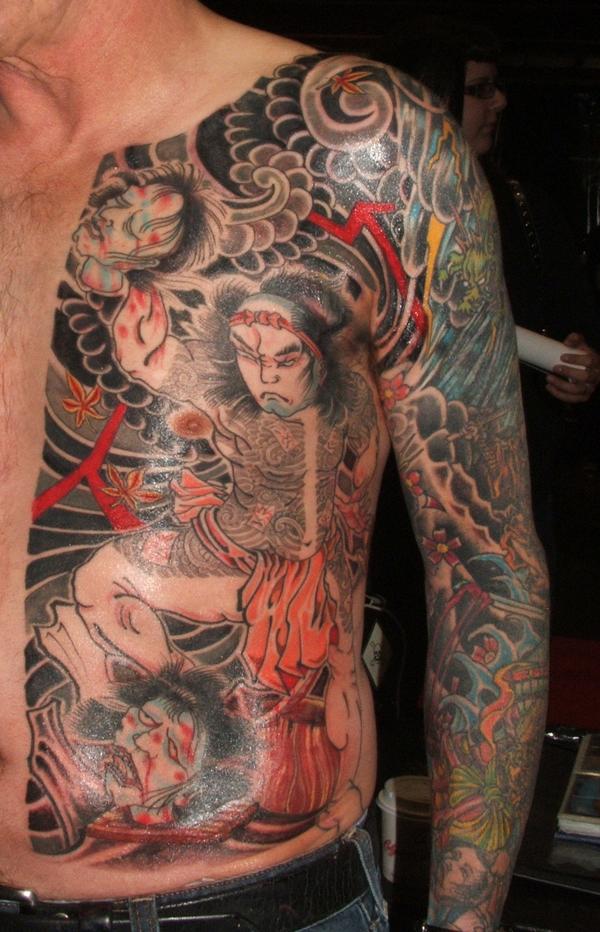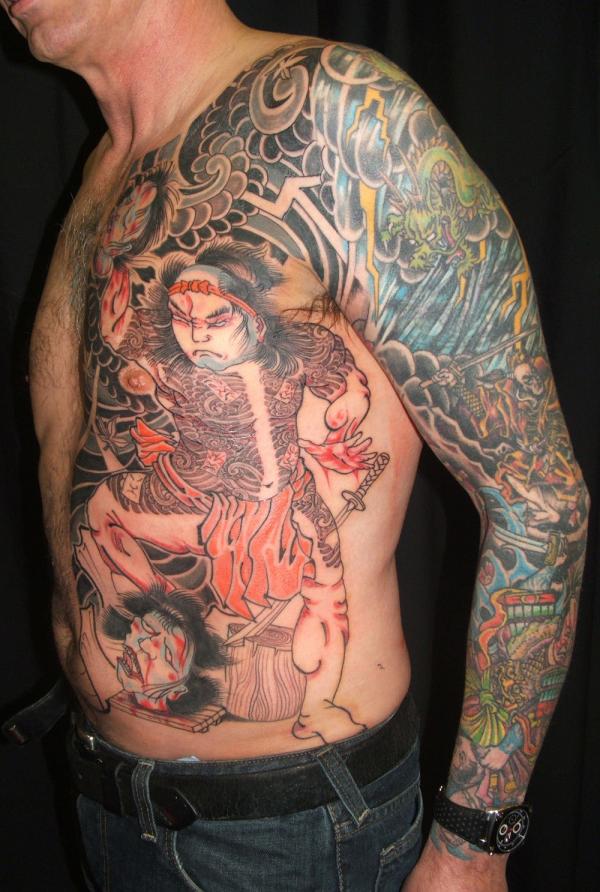Yakuza no jikkō

Before the Meiji restoration in Japan, decapitation was a common punishment, sometimes for minor offences. It was also considered very severe and degrading form of punishment. Samurai were often allowed to decapitate soldiers who had fled from battle, as it was considered cowardly. Here, our indelicate executioner is depicted with a body suit of tattoos, indicating that he more likely belongs to a criminal fraternity rather than a noble Samurai family. Decapitation was also historically performed as the second step in seppuku (ritual suicide by disembowelment). After the victim had sliced his own abdomen open, another warrior would strike his head off from behind with a katana to hasten death and to reduce the suffering. The blow was expected to be precise enough to leave intact a small strip of skin at the front of the neck—to spare invited and honoured guests the indelicacy of witnessing a severed head rolling about, or towards them; such an event would have been considered inelegant and in bad taste. The sword was expected to be used upon the slightest sign that the practitioner might yield to pain and cry out—avoiding dishonour to him and to all partaking in the privilege of observing an honourable demise. As skill was involved, only the most trusted warrior was honoured enough to take part.

